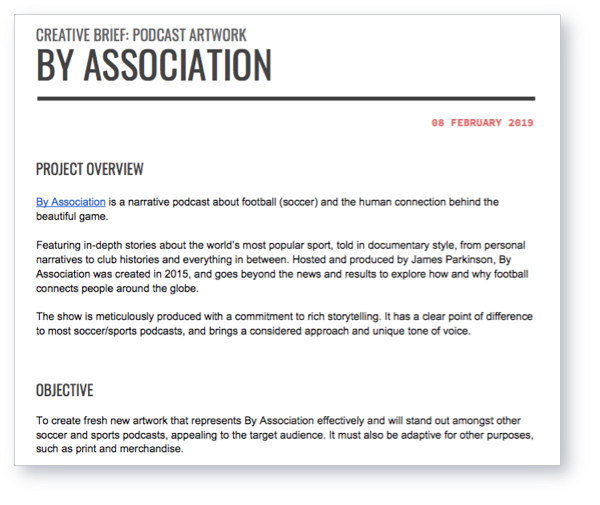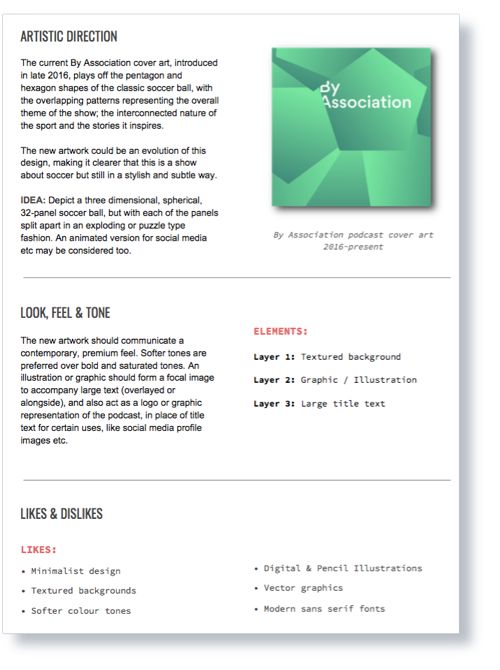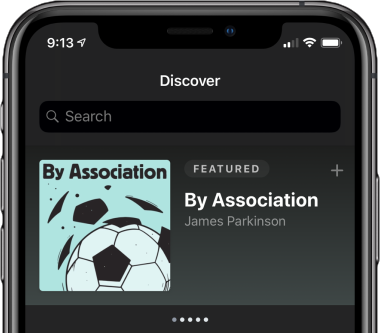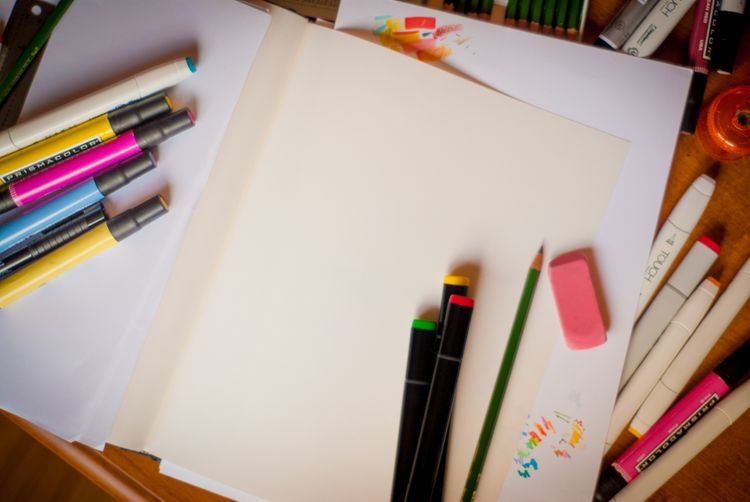Podcast artwork is essential for any show, especially if you hope to connect with and grow an audience. Audio is incredibly powerful, but before people hear your show they’re probably going to see your show. Whether that’s through social media, your podcast website (also essential, by the way) or via a podcast app, the visual identity of your podcast contributes to how people feel about your show, and maybe whether they even press play at all.
I won’t be getting into the specifics of what actually makes for great podcast artwork in this post. But before you commission any art for your show, you should certainly understand the basic principles. For more on that, I encourage you to check out this excellent article (and Creative Live class) from Dan Misener on the importance of ‘product packaging’ for your podcast.
So, why should you commission artwork for your podcast in the first place? Well, unless you’re a graphic designer or illustrator, in addition to being a podcast producer, you’re probably not going to be making the most of this crucial creative step. Despite knowing my way around some basic graphic editing programs, I am not a designer. So leaving it to the pros is going to yield the best results.
Narrowing down on the key details at this stage of the process, and communicating them effectively will give a designer a baseline to work from.
In 2019, I set about acquiring a new visual identity for my independent show By Association. I was getting ready to launch a new season and I wanted to give it a refresh. While the old artwork was visually appealing, it was missing some key elements that I really wanted for my show art. But before I even approached a designer, I took one very important step, which was to develop a creative brief.
A creative brief is a document that outlines what your show is all about and what you’re looking for in your artwork. If you don’t know what you want or what your artwork is supposed to represent, you can’t expect a designer to. So narrowing down on the key details at this stage of the process, and communicating them effectively will give a designer a baseline to work from.

So where to start? First, you want to establish what your show is about, who its target audience is (i.e. who your show art should appeal to), and what makes it unique. Give a clear and direct overview, as well as your objective in establishing a visual identity.
The next step is perhaps the most important: artistic direction. This is where you detail the elements you want to include in your art and the overall style it should reflect. It’s also a chance to outline anything you don’t want in your artwork or things a designer should avoid. In most cases, the end product will probably differ slightly from your brief - that’s just part of working through creative ideas - but you need a starting point. In my case, I also had existing artwork which meant I could point out how this new art might differ.

Ideally, you will find an artist or designer that has worked on podcast artwork before and understands the key elements. But that’s not always possible, so including some examples of artwork from other podcasts that can serve as inspiration or a general guide can also be helpful.
Another factor you may want to consider is other shows or “competitors” in your podcast category. How should your artwork stand out or differentiate itself from those shows? Having a creative brief will also allow you to assess which designers will actually suit the art style you’re going for.
You may also want to include links to your podcast website, trailer and a recent episode or two, so your designer can get a feel for how your show sounds and match their artistic approach accordingly. If you already have custom theme music for your podcast, this can further serve as creative inspiration.
Lastly, make sure to include the necessary specifications, the timeline you need your artwork completed by, your budget and contact details. Once you have all this information established, put some time into crafting and formatting your document, including any supporting images, and ensuring it’s easy to read and understand. Now you’re ready to start reaching out to designers.
It can take some time to find the right designer, who can work with your desired style and budget, so be patient. It’s also worth looking through their existing portfolio and identifying pieces that you like, to give them an additional sense of direction, and whether they’re capable of delivering what you require. For By Association, I contacted at least six different people before I landed on the best option. But all of this effort will pay off, establishing a solid working relationship with a designer, and getting amazing art for your show.

And I can tell you that your designer will greatly appreciate the leg work. Establishing a thorough brief is - or at least should be - standard practice in commissioning creative projects. But far too often it’s given little thought, or not done at all. People just fail to put in the work before approaching a designer. While you’re hiring them to lead the creative process, they’re not a mind reader. If you can effectively communicate what you want, your designer will thank you for it, and you’ll get an outcome you’re happy with.
Every designer I approached had only positive feedback on my creative brief. Here are some of the individual comments I received:
I read through your brief, which by the way I'd send to any other client I've ever had as an example of what a brief should be. It's a pleasure to receive such concise needs for a project.
This is one of the best briefs I've seen, so I just want to tell you how much I appreciate that.
Your brief was by far, the best presented, most thorough and in-depth brief I’ve received in a long time.
This is an approach I’ve since brought to Lawson Media when we’re developing new shows, both for commissioning new artwork and custom theme music. Paying close attention to a podcasts visual elements, as much as its audible ones, means you end up with a polished and cohesive package that’s ready for an audience.

